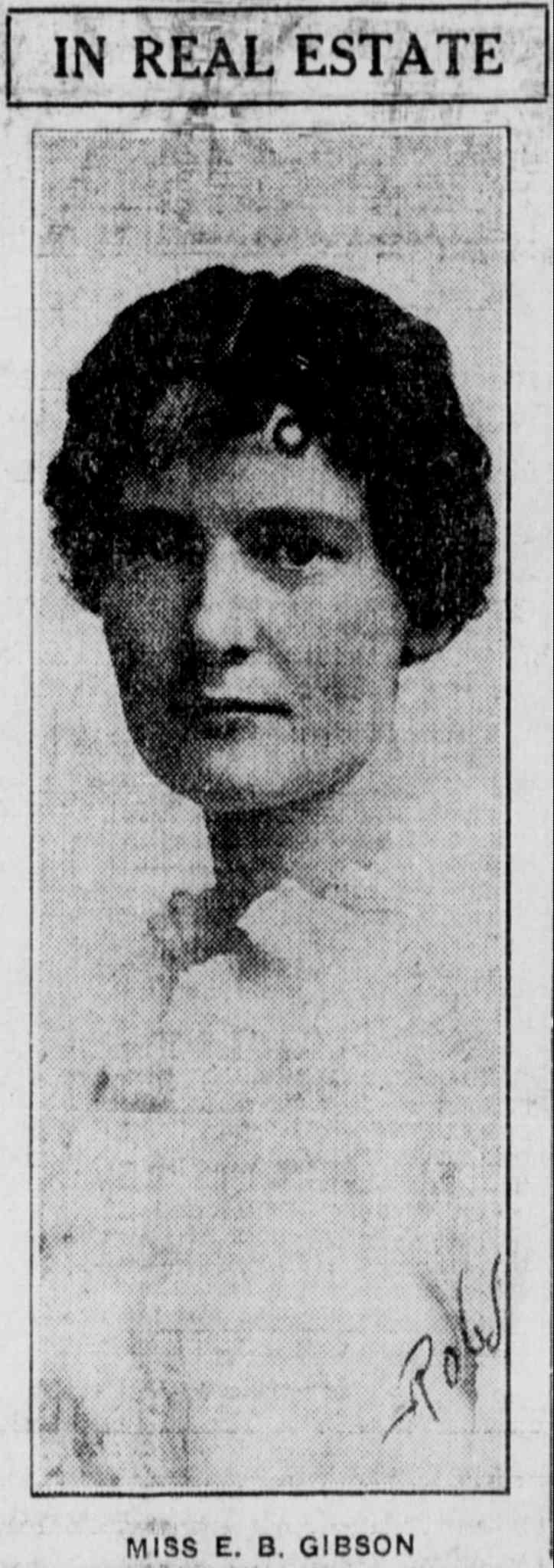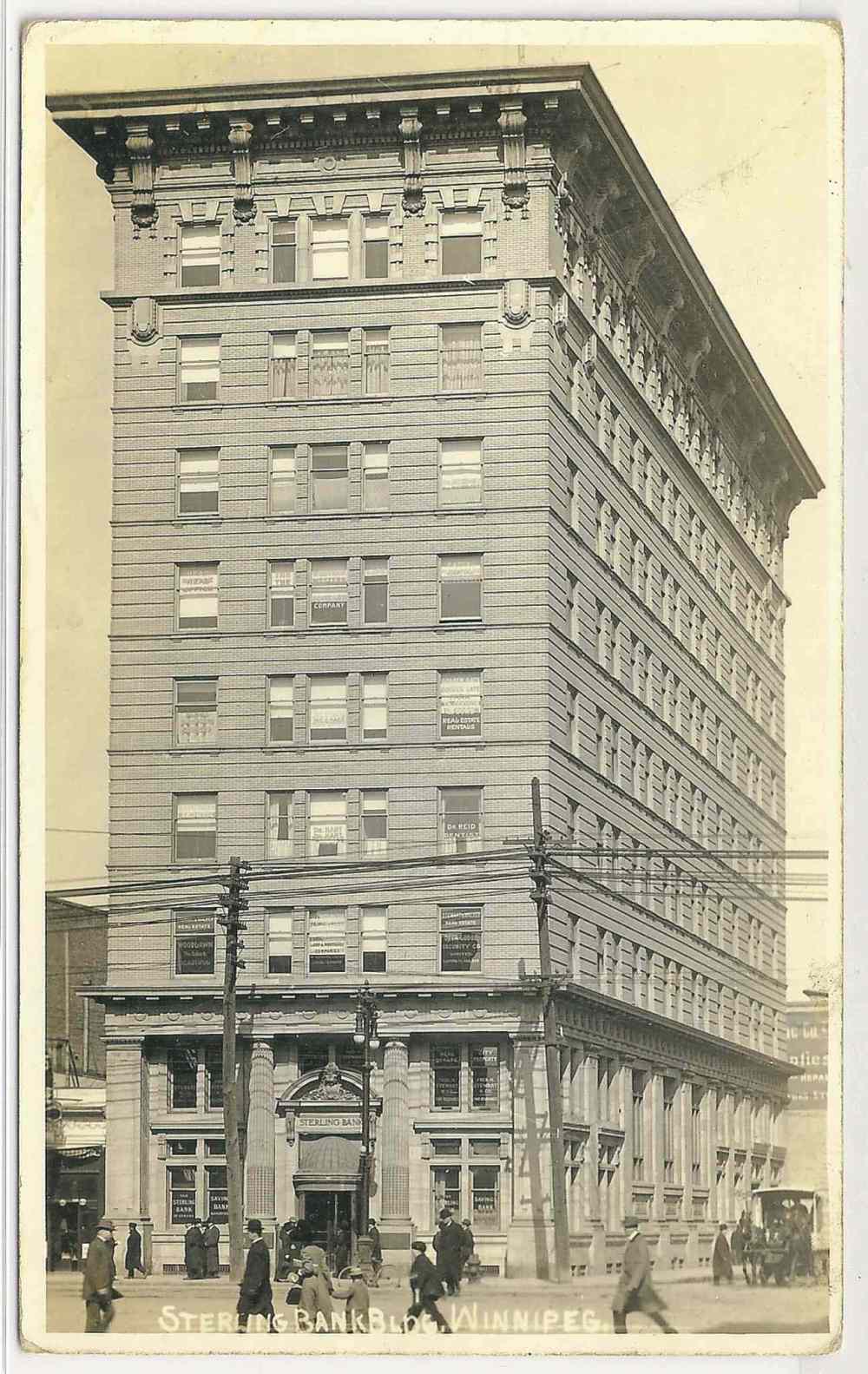First lady of real estate: Gibson gained fame as city’s earliest female, full-time agent
Advertisement
Read this article for free:
or
Already have an account? Log in here »
To continue reading, please subscribe:
Monthly Digital Subscription
$0 for the first 4 weeks*
- Enjoy unlimited reading on winnipegfreepress.com
- Read the E-Edition, our digital replica newspaper
- Access News Break, our award-winning app
- Play interactive puzzles
*No charge for 4 weeks then price increases to the regular rate of $19.00 plus GST every four weeks. Offer available to new and qualified returning subscribers only. Cancel any time.
Monthly Digital Subscription
$4.75/week*
- Enjoy unlimited reading on winnipegfreepress.com
- Read the E-Edition, our digital replica newspaper
- Access News Break, our award-winning app
- Play interactive puzzles
*Billed as $19 plus GST every four weeks. Cancel any time.
To continue reading, please subscribe:
Add Free Press access to your Brandon Sun subscription for only an additional
$1 for the first 4 weeks*
*Your next subscription payment will increase by $1.00 and you will be charged $16.99 plus GST for four weeks. After four weeks, your payment will increase to $23.99 plus GST every four weeks.
Read unlimited articles for free today:
or
Already have an account? Log in here »
Hey there, time traveller!
This article was published 10/01/2016 (3593 days ago), so information in it may no longer be current.
During Winnipeg’s earliest decades, the real estate business was not for the faint of heart. Known for its booms and busts, fortunes could be made or lost in a matter of days. Like most industries, it was strictly a man’s world. That is, until Evelyn Bertie Gibson came on the scene in 1910.
Her parents, Henry and Fannie Gibson, were born in the Channel Islands but met and married in Cape Town, South Africa. They set off for Manitoba in the late 1880s with their first child, daughter Millicent.
It was believed the Gibsons came from a well-off background, given their extensive musical training and the fact they had a maid in tow. Evelyn Bertie, their second child, was born at Brokenhead in 1887 before the family settled on a farm at St. Ouens, near Beausejour.

Henry Gibson had a varied career. He had a large cattle barn built, farmed the land and became the area’s first postmaster. (He suggested naming the office St. Ouen’s after his wife’s hometown.) He also dabbled in real estate, was an inventor and, thanks to his law degree, was appointed as the area’s magistrate in 1905.
One thing the remote community could not offer the Gibsons’ children, eventually numbering seven, was higher education. This led the family to eventually relocate to Winnipeg, but not before Evelyn preceded them, around 1906. She enrolled in teachers college but found the coursework tedious, so she set out to find something more challenging.
With a head for business and an interest in photography, she got work as a clerk at New York Studios, a Main Street portrait shop. After a couple of years, she became a saleswoman at the studios of William A. Martel in the now-demolished Alberta Block on Portage Avenue at Garry Street.
Martel specialized in photographing urban spaces and buildings and is best remembered for his 600-image book An Illustrated Souvenir of Winnipeg, published in 1903 and republished in 2008.
In 1909, Martel created a short-lived company called Winnipeg Amateur Photography Supply Ltd. and appointed Gibson the manager. The shop appears to have lasted little more than a year, but it gave Gibson a chance to hone her business skills and decide she wanted to be her own boss.
When asked why she chose real estate, Gibson said: “I don’t know that there was any other reason except a certain lure, which I believe everybody here feels, to buy and sell land; and besides, I felt also that if I could successfully sell photographs, which most people consider a luxury, surely I could sell land, which many consider a necessity.”
Gibson’s first office was a small space located across the hall from her former employer. She advertised as “Miss E.B. Gibson — Real Estate,” which attracted reporters from both the Free Press and Tribune, both noting she was the only woman in the city, likely in Western Canada, to work full time in the field.
Despite starting out with just a few hundred dollars in capital, her first deal was a blockbuster. Gibson brokered the sale of a $40,000 building (she didn’t mention the block by name in later interviews).
‘Once you have built up your business reputation, clients come of themselves’
— Evelyn Bertie Gibson
That put her in the league of big-time agents and provided enough capital she could put down payments on smaller properties and hold them until values increased. A couple of years later, she even financed the repurchase of that $40,000 block for herself as a rental property.
Gibson’s portfolio was diverse. Her bread and butter appeared to be houses, especially in the West End, where she herself settled for a number of years. She also acted as a rental agent for apartment blocks and sold commercial land on main thoroughfares. Given her rural background, it’s not surprising farms and rural lots were sometimes featured in her ads. This diversity led to an international clientele, pairing up U.S. businessmen with investment properties in the “Chicago of the North” and families from overseas looking for farmland.
When asked by a Free Press reporter to give advice to others seeking to enter the real estate game, her answer was simple: “Don’t put up any fake propositions, but buy and sell good stuff. Once you have built up your business reputation, clients come of themselves.”
The small office in the Alberta Block didn’t last long. Within a couple of years, she moved into the Sterling Bank Building on Portage Avenue at Smith Street and to a series of larger office spaces, reaching the penultimate floor by 1920.
If Gibson faced opposition because of her gender, she didn’t let on, at least publicly. She once praised her male colleagues for their acceptance: “They are the best on earth. Since beginning my career they have shown me nothing but good fellowship and have assisted me in every way possible, willingly giving me information and advice whenever I asked for it.”
She noted being a woman in the field had its advantages.
“A man comes to me wanting to buy a house. In almost every instance, he declares that it is his wife who must be satisfied. It is very easy for me to see his wife, get her views and fit the house to the woman.”

Thanks to interviews published in the Tribune and Free Press, and even a December 1914 write-up in Maclean’s magazine, Gibson was arguably one of Winnipeg’s best-known businesswomen. Despite this, her personal life remains a bit of a mystery.
Unlike some prominent business people or society women, she appears not to have used her notoriety to speak up on issues of the day, and if she supported any causes or did any charitable work, it rarely got mentioned in newspapers.
One exception where she did speak out was in a letter to the editor published in the Winnipeg Tribune Jan. 4, 1912 regarding the issue of women getting the vote.
She wrote: “When I look out of my office window at the man digging up the pavement… who perhaps has not got a dollar in property, it seems to me unjust that that man’s electoral power should be greater than mine. Further, a man in my own employ who comes to me for a weekly wage has the right to vote against my interest, while I cannot cast a vote to offset his.”
In 1917, Gibson entered a business partnership with Thomas Guinon. Canadian-born and raised, Guinon went into the hotel and real estate business in North Dakota, eventually serving as a member of the North Dakota state legislature. In 1901, he relocated to Manitoba and created the Red River Loan and Land Company, specializing in bringing American settlers to the Prairies.
By this time, though, Guinon was near retirement, and Red River Loan and Land ceased advertising around 1914. For a year or two, the partnership advertised as Guinon and Gibson, and in 1919, Guinon revived the old company name, making Gibson the secretary treasurer. From their office on the eighth floor of the Sterling Bank Building, Red River sold a mix of rural land and city houses for a couple of years.
In 1920, Gibson moved from her Lipton Street home to live with her widower father in the family home on Jessie Avenue. In 1922, she married Matthew C. Ryan, a salesman, and gave up her practice to start a family. A year later, daughter Joyce was born.

The Ryans emigrated to Los Angeles in January 1924. Her father, Henry, followed in 1929 and moved in with them.
Evelyn Bertie Gibson died in L.A. Aug. 25, 1940 after a short illness, at the age of 53. A brief obituary in the Winnipeg Tribune noted she continued to work in the real estate industry in her new country.
Christian Cassidy writes about local history on his blog, West End Dumplings.

Our newsroom depends on a growing audience of readers to power our journalism. If you are not a paid reader, please consider becoming a subscriber.
Our newsroom depends on its audience of readers to power our journalism. Thank you for your support.
History
Updated on Sunday, January 10, 2016 7:45 AM CST: Photos changed.

